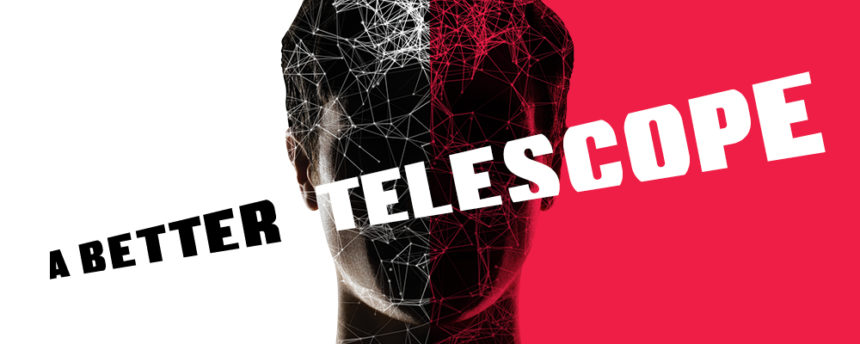You could argue the core tenet of all health marketing is that it must help or persuade patients to change their unhealthy behaviors. That could mean steering a person with diabetes toward a better diet and exercise regimen or empowering a person who’s depressed to avail himself of resources to address his mental, emotional and physical well-being.
But the smartest behavioral marketing campaigns go beyond outlining a series of preventative actions and into the realm of addressing deeply held biases and ingrained habits. “It’s a question of having more accurate observations,” says Brian Dunn, chief behavioral officer at Concentric Health Experience. “That’s what we’re trying to do. We’re after a better telescope.”
Here are two campaigns, one in the realm of smoking cessation and the other in oncology, that succeeded in melding traditional behavioral insights with the newest tools and technologies marketers and behaviorists have at their disposal.
GlaxoSmithKline and Wunderman Thompson Health
MyQuit, Smoking cessation
Quitting smoking remains a heady challenge. Given the habit’s chemical, social and lifestyle components, weaning oneself off cigarettes often becomes a 24/7 task.
To help smokers through the process, GlaxoSmithKline, maker of smoking cessation products Nicorette and Nicoderm CQ, and Wunderman Thompson Health created a support program and app grounded in behavioral psychology. The program, MyQuit, includes educational tools alongside a craving tracker, location-based notifications and personalized motivators.
MyQuit guides smokers through an eight-, 10- or 12-week process that supplements Nicorette or Nicoderm. Ann Hazan, SVP and group strategy director at WTH, says it was designed with the goal of getting into the mind of the target audience.
“The first week is the hardest week. It hurts from an emotional perspective and it gets progressively harder,” she explains. “The second week is about maintaining it from a physical perspective. That’s the fundamental baseline that we needed to understand about quitting smoking.”
Our program helps people mark those times when they were champions and talk about the emotions they felt when they were having a craving and what they did about it.
Ann Hazan, Wunderman Thompson Health
Ultimately, MyQuit is about sustainable behavior change — and at its core, behavior change is about reinforcement. When would-be quitters are able to resist the urge to have a cigarette during their lunch break or while driving — perhaps times where they would normally smoke — the support program celebrates that success.
“We want to reinforce really small wins,” Hazan says. “Our program helps people mark those times when they were champions and talk about the emotions they felt when they were having a craving and what they did about it.”
MyQuit users can log this as well as cravings, their use of Nicorette or Nicoderm and even slip-ups in the program app. As time passes, they get a clearer picture of when cravings happen and, in theory, watch the number of those cravings steadily decrease over time.
If users opt-in to share location data, the app can track the locations where cravings arise, like in a bar/restaurant setting or during the drive to work. Once the app has that data, it can be configured to send push notifications with motivational messages during those tough spots. The app also offers badges and achievements when users meet certain milestones, like logging a set number of cravings.

While MyQuit’s email component focuses on more generalized content, the app serves as a specific, in-the-moment reminder. “It’s easier to push out those little reminders and words of encouragement on the phone. It’s a little bit more challenging to do that via email,” says William Martino, WTH’s New York managing director and GSK account lead
One major challenge for GSK and WTH was settling on a “right” number of touches. Too many emails can become a nuisance, while too few won’t have any impact. The program’s sweet spot: Two or three emails per week, with fewer as the program progresses.
Another important factor was identifying individual motivations for quitting, whether related to health, family or even money. “If you probe and keep pushing, eventually you get to much deeper places such as ‘I want to live a longer life,’ ‘I care about the way people perceive me’ or ‘I want to be there for my family in the long run,’” Martino explains. “It’s really about finding the right mix of content and tonality to break through. You need to remember that one approach is not going to work for everybody.”
Merck and MicroMass Communications
Key+You, Cancer
With its arduous physical and mental components, cancer treatment remains among the most all-encompassing for patients of any kind. To back patients being treated with Keytruda, Merck and MicroMass developed Key+You, a program designed to help with everything from stress reduction to facilitating one-on-one nursing support.
“Key+You is designed to help patients, as well as the caregivers supporting them, manage the issues related to the condition and the product, but also those practical and emotional challenges that they deal with, going beyond the product-related treatment,” says MicroMass VP and director of client services Phil Mann. “We recognize that we can impact treatment adherence and even acceptance of treatment, so we put a huge emphasis on addressing those practical and emotional challenges.”
The emotional side of the support program focuses on mindfulness, a meditation technique through which one focuses on the present moment. Tools such as relaxing videos, guided breathing exercises and interactive kaleidoscope patterns are used to help relax patients during treatment.
Key+You includes an active learning component. As an example, the program asked patients to imagine their energy as a finite number of coins to spend. If a patient only had five coins, the program would help them moderate their energy use by providing a checklist of common tasks that “equal” the five coins.
We recognize that we can impact treatment adherence and even acceptance of treatment, so we put a huge emphasis on addressing those practical and emotional challenges.
Phil Mann, MicroMass Communications
“We have an exercise that allows patients to look at and identify fairly standard tasks that they’re used to doing, such as laundry, and helping them understand they’ve only got so much energy in a day now,” Mann explains. “It helps them start working on a way to actively learn how best to spend that energy. At the same time, we often take that opportunity to prompt them that this is a place where you can utilize members of your care team that help you.”
Key+You also taps a technique known as motivational interviewing, which provides a framework for caregivers to talk to patients about their treatment. Nurses have been trained to let patients lead calls about treatment and to ask open-ended questions.
“We recognize that cancer patients don’t want to be constantly asked, ‘Can I help you?’” Mann says. “So how best can caregivers have those open and honest conversations with the patient? It’s a lot of information for patients to take in.”
Key+You has followed Keytruda through its new indications, spurring the Merck/MicroMass team to update the support program to accommodate different types of cancer. Mann says the increasing number of new indications presents a unique challenge in the pharma marketing world.
“With most products, you might get one to two indication extensions over time. But for Keytruda, it’s rapid-fire. You get multiple new indications within a quarter,” Mann explains. “We had to have a program that was simple, scalable and sustainable, and one that would clearly deliver upon those emotional and physical needs a patient will have.”
From the September 01, 2019 Issue of MM+M - Medical Marketing and Media







